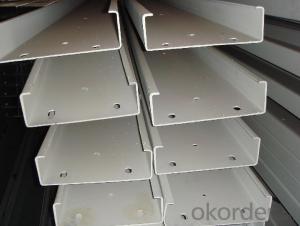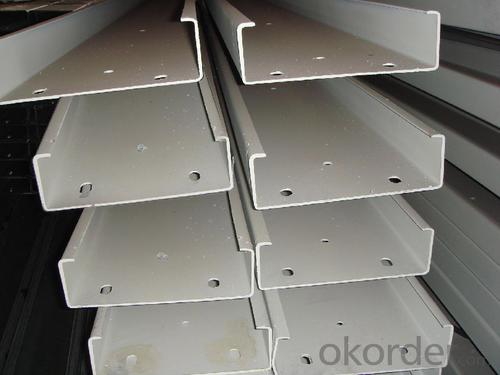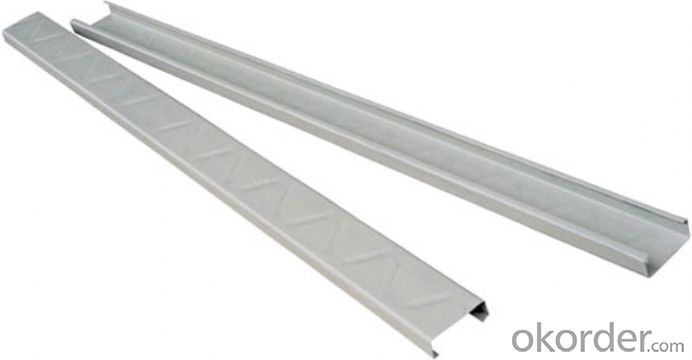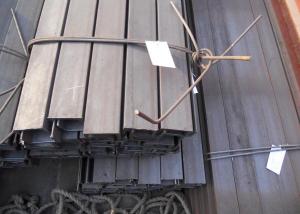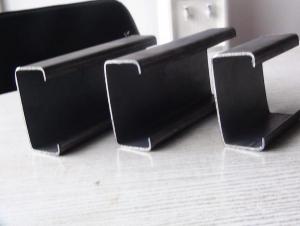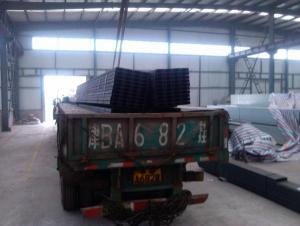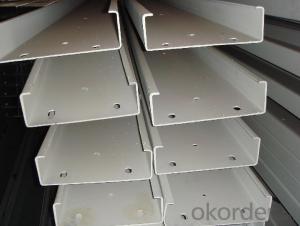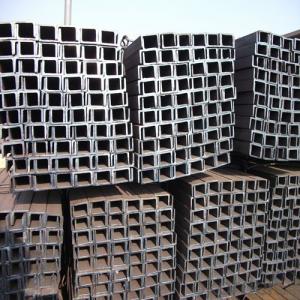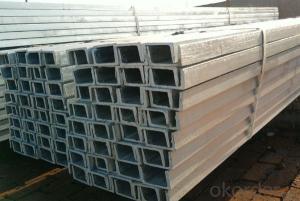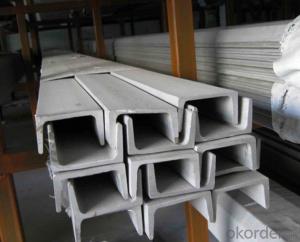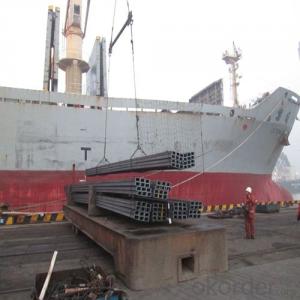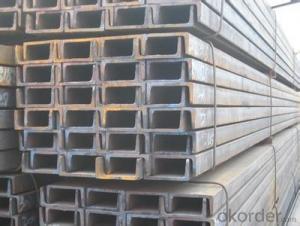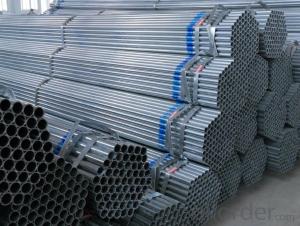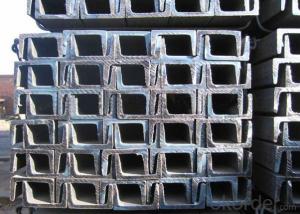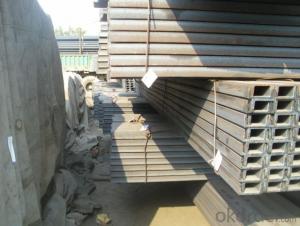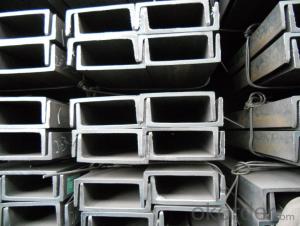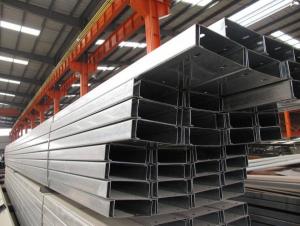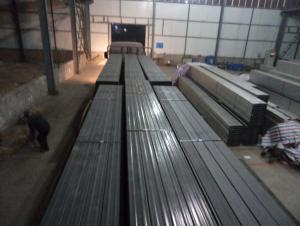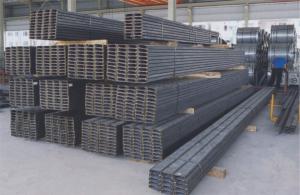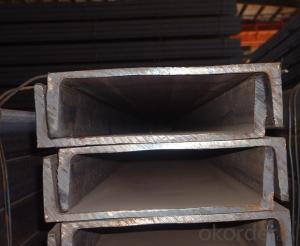Steel C Channel Prime Hot Rolled from China
- Loading Port:
- Tianjin
- Payment Terms:
- TT or LC
- Min Order Qty:
- 29 m.t.
- Supply Capability:
- 24000 m.t./month
OKorder Service Pledge
OKorder Financial Service
You Might Also Like
Product Description:
OKorder is offering Steel C Channel Prime Hot Rolled from China at great prices with worldwide shipping. Our supplier is a world-class manufacturer of steel, with our products utilized the world over. OKorder annually supplies products to European, North American and Asian markets. We provide quotations within 24 hours of receiving an inquiry and guarantee competitive prices.
Product Applications:
Steel C Channel Prime Hot Rolled from China are ideal for structural applications and are widely used in the construction of buildings and bridges, and the manufacturing, petrochemical, and transportation industries.
Product Advantages:
OKorder's Steel C Channel Prime Hot Rolled from China Sizes are durable, strong, and resist corrosion.
Main Product Features:
· Premium quality
· Prompt delivery & seaworthy packing (30 days after receiving deposit)
· Corrosion resistance
· Can be recycled and reused
· Mill test certification
· Professional Service
· Competitive pricing
Product Specifications:
Prime hot rolled steel channel bar
1.Competitive price
2.Fast delivery time
3.Customized length
Prime hot rolled steel channel bar from china
Quick details
Standard: AISI,ASTM,BS,GB,JIS
Brand name: Baosteel Masteel Ansteel Shousteel Shasteel...
Technical: Hot rolled
Surface: Galvanized or as your request
Length: 6-12 meter or cut as your requirements
PRICE: Keep lower operating costs so as to offer competitive price for our clients
QUALITY; all products undergo a rigorous factory inspection and QS certified, so as to safeguard the interests
of users
SINCERITY: no cheating, always tell the turth to clients,just do the business we can do
COMMITMENT: "Reputation first". Confirm the delivery on time!
Excellent quality and reasonable price
Any trial order in small quantity is welcome
Small order is acceptable
OEM is acceptable
Any third party testing is acceptable
Quality guarantee
FAQ:
Q1: Why buy Materials & Equipment from OKorder.com?
A1: All products offered byOKorder.com are carefully selected from China's most reliable manufacturing enterprises. Through its ISO certifications, OKorder.com adheres to the highest standards and a commitment to supply chain safety and customer satisfaction.
Q2: How do we guarantee the quality of our products?
A2: We have established an advanced quality management system which conducts strict quality tests at every step, from raw materials to the final product. At the same time, we provide extensive follow-up service assurances as required.
Q3: How soon can we receive the product after purchase?
A3: Within three days of placing an order, we will begin production. The specific shipping date is dependent upon international and government factors, but is typically 7 to 10 workdays.
Q4: What makes stainless steel stainless?
A4: Stainless steel must contain at least 10.5 % chromium. It is this element that reacts with the oxygen in the air to form a complex chrome-oxide surface layer that is invisible but strong enough to prevent further oxygen from "staining" (rusting) the surface. Higher levels of chromium and the addition of other alloying elements such as nickel and molybdenum enhance this surface layer and improve the corrosion resistance of the stainless material.
Q5: Can stainless steel rust?
A5: Stainless does not "rust" as you think of regular steel rusting with a red oxide on the surface that flakes off. If you see red rust it is probably due to some iron particles that have contaminated the surface of the stainless steel and it is these iron particles that are rusting. Look at the source of the rusting and see if you can remove it from the surface.
Images:
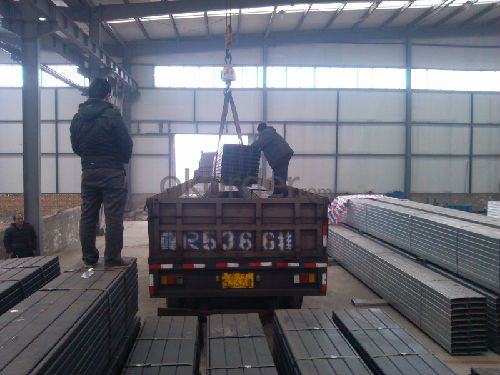
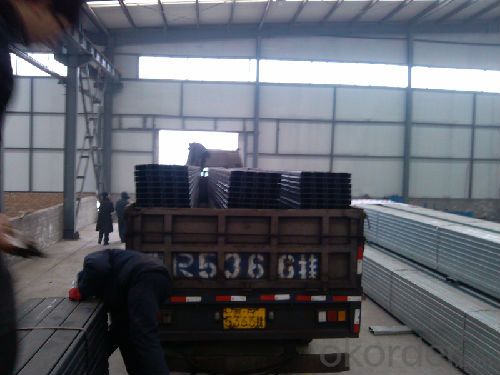

- Q: How to judge whether the joint of steel structure is rigid or hinged, as shown below, the steel beam and steel column are all channel steel and welded through weld joint.
- A hinge: as the name suggests, the theory is completely unable to bear joint moment, and generally cannot be used for splicing component connection; hinged joints are usually only used for connecting end members, such as the end of the column and beam connections.
- Q: Can steel channels be used for guardrail systems?
- Yes, steel channels can be used for guardrail systems. Steel channels provide strength and durability, making them suitable for use in guardrail systems to protect and guide pedestrians or vehicles along roadways, walkways, or other designated areas.
- Q: What are the different surface treatments available for steel channels?
- Some of the different surface treatments available for steel channels include galvanizing, powder coating, painting, and epoxy coating. Galvanizing involves applying a protective layer of zinc to the surface of the steel, providing corrosion resistance. Powder coating involves applying a dry powder to the surface of the steel, which is then heated and cured to create a durable and decorative coating. Painting involves applying liquid paint to the steel surface, providing both protection and aesthetics. Epoxy coating involves applying an epoxy resin to the steel surface, which creates a durable and chemically resistant coating.
- Q: How do steel channels contribute to sound insulation?
- Steel channels can contribute to sound insulation by creating a barrier between the source of the sound and the surrounding environment. The use of steel channels helps to absorb and dampen sound vibrations, reducing the transmission of noise through walls and ceilings. Additionally, the rigid structure of steel channels helps to prevent the resonance and amplification of sound waves, further enhancing sound insulation.
- Q: Is the channel 20 the same as the channel 20b?
- The specifications are expressed in millimeters of height (H) * leg width (b) * waist thickness (d), such as 100*48*5.3, which means waist height is 100 mm, leg width is 48 mm, waist thickness is 5.3 mm channel, or 10# channel steel. The same height of the channel, if there are several different leg width and waist thickness, also need to add a, B, C on the right side of the model, such as 22#a, 22#b and so on.
- Q: Can steel channels be used for equipment supports?
- Yes, steel channels can be used for equipment supports. They provide a strong and durable structure that can effectively support heavy equipment. Steel channels are commonly used in various industries for equipment mounting and support applications due to their strength, stability, and versatility.
- Q: How are the types of I-beam and channel ABC distinguished? Tell me about it, please.
- As the name suggests, the shape of the I-beam looks on the side as "work", and the channel is square and has less surface.
- Q: Can steel channels be used for balcony construction?
- Indeed, the utilization of steel channels is viable for the construction of balconies. These versatile structural elements contribute strength and stability to a range of construction endeavors, including the creation of balconies. Frequently employed as support beams or joists in balcony frameworks, steel channels guarantee the steadiness and load-bearing capability of the balcony. Thanks to their remarkable strength-to-weight ratio, steel channels are capable of withstanding substantial loads while ensuring the structural soundness of the balcony. Moreover, the fabrication and installation of steel channels are effortless, rendering them a favored option for balcony construction.
- Q: Are steel channels suitable for load-bearing applications?
- Yes, steel channels are suitable for load-bearing applications. Steel channels are designed to provide structural support and are commonly used in construction and engineering projects. They offer high strength and durability, making them ideal for withstanding heavy loads and distributing weight effectively. Steel channels can be used in various load-bearing applications such as beams, columns, frames, and supports. Additionally, they are versatile and can be easily customized to meet specific load requirements. Overall, steel channels are a reliable and popular choice for load-bearing applications due to their strength, durability, and versatility.
- Q: Are steel channels suitable for the power generation manufacturing industry?
- Yes, steel channels are suitable for the power generation manufacturing industry. Steel channels are commonly used in the manufacturing of power generation equipment such as turbines, generators, and transformers. The strong and durable nature of steel makes it an ideal material for supporting heavy loads and withstanding the high temperatures and pressures often encountered in power generation processes. Additionally, steel channels can be easily fabricated and customized to meet the specific design requirements of power generation equipment. They provide stability, structural integrity, and reliability, making them a suitable choice for the power generation manufacturing industry.
Send your message to us
Steel C Channel Prime Hot Rolled from China
- Loading Port:
- Tianjin
- Payment Terms:
- TT or LC
- Min Order Qty:
- 29 m.t.
- Supply Capability:
- 24000 m.t./month
OKorder Service Pledge
OKorder Financial Service
Similar products
Hot products
Hot Searches
Related keywords
